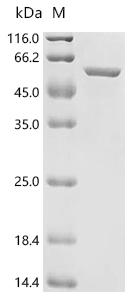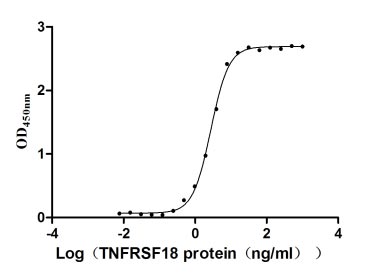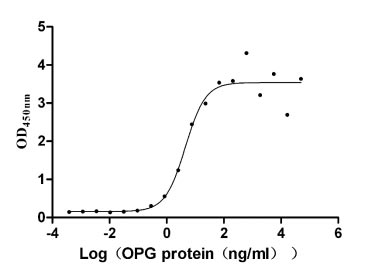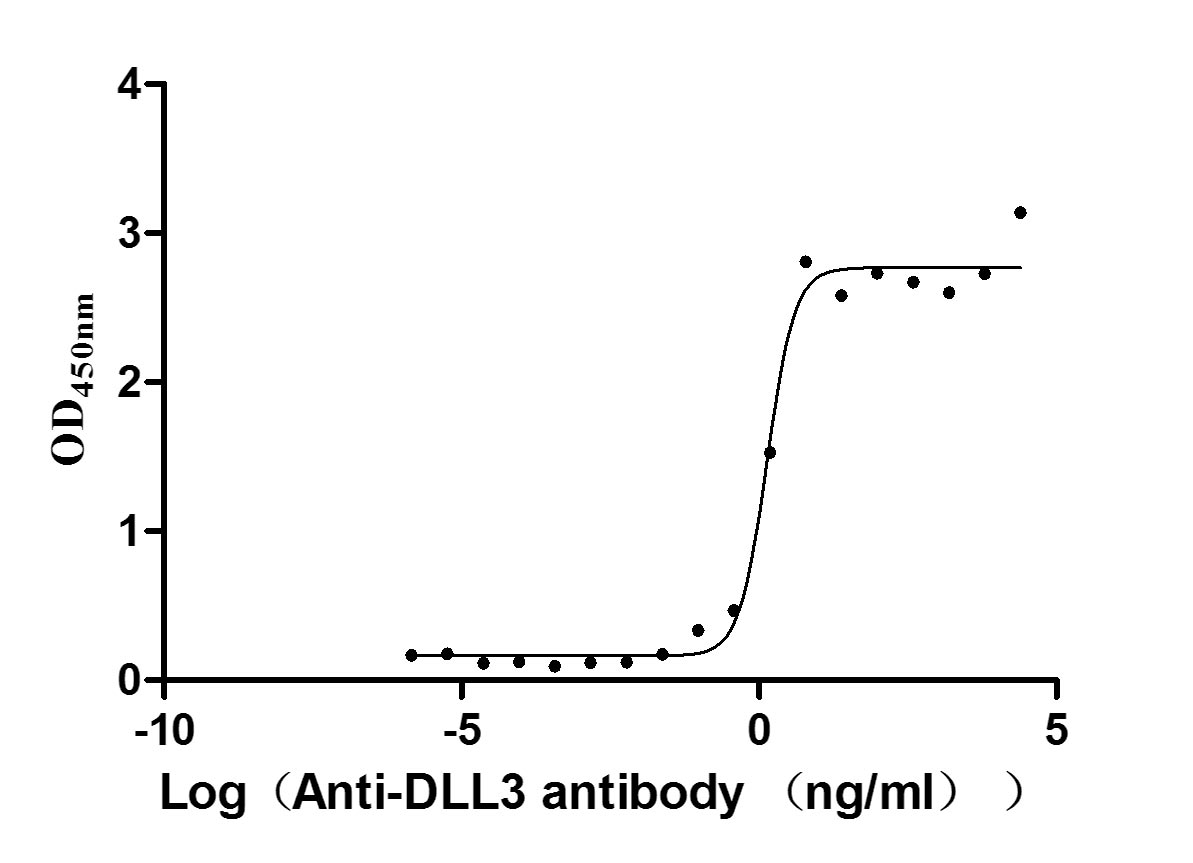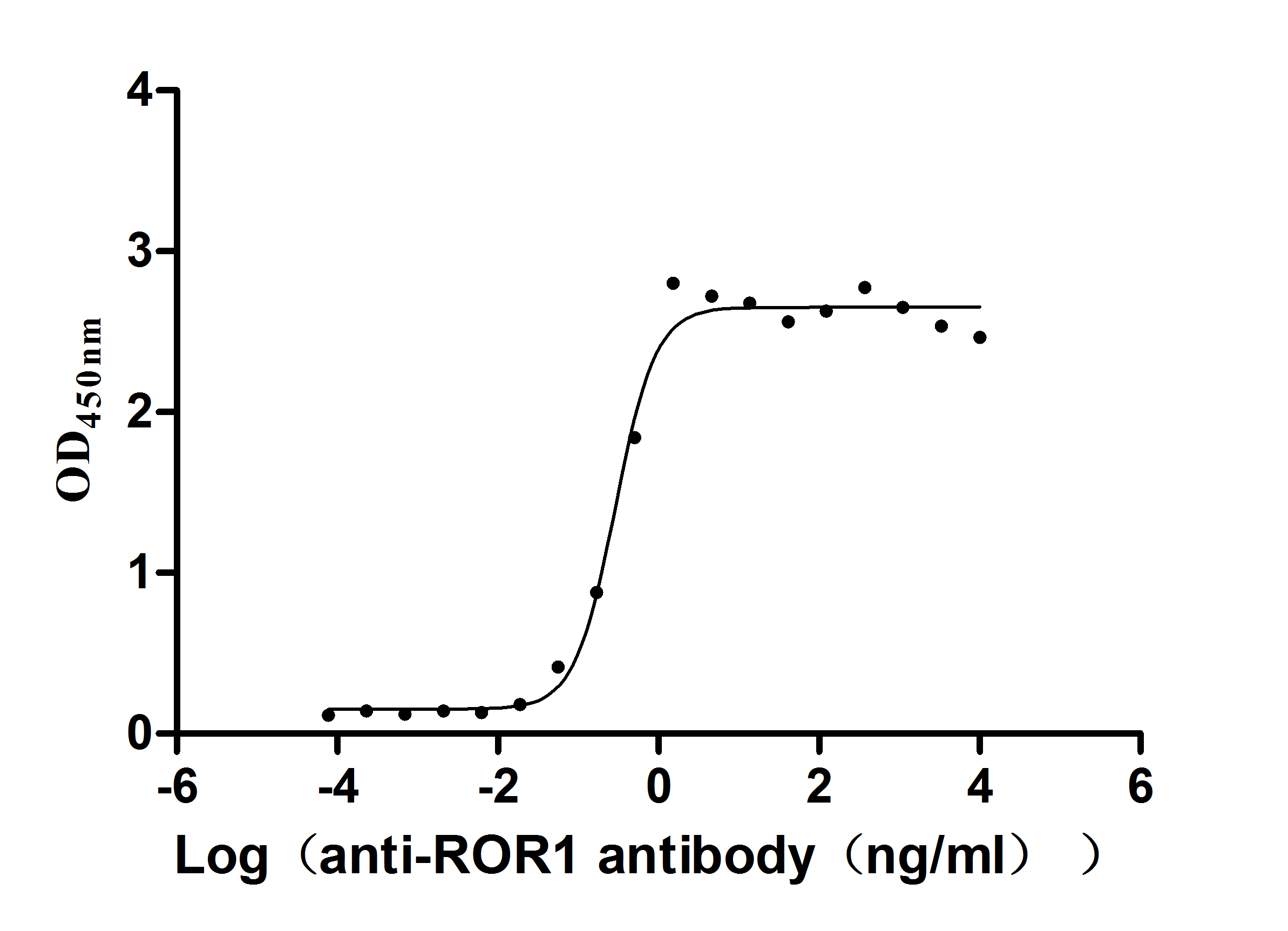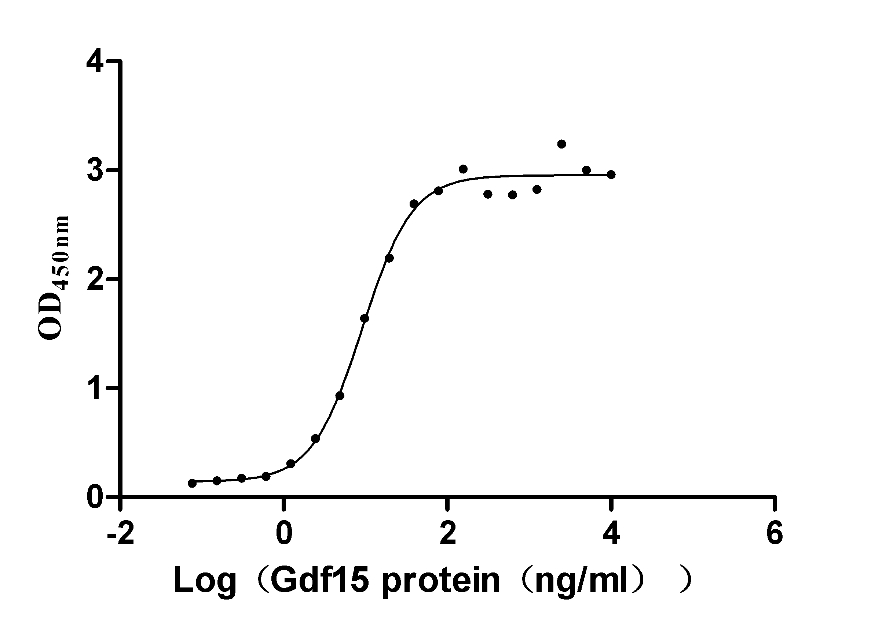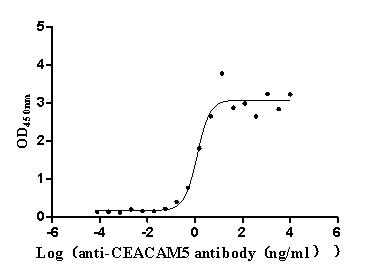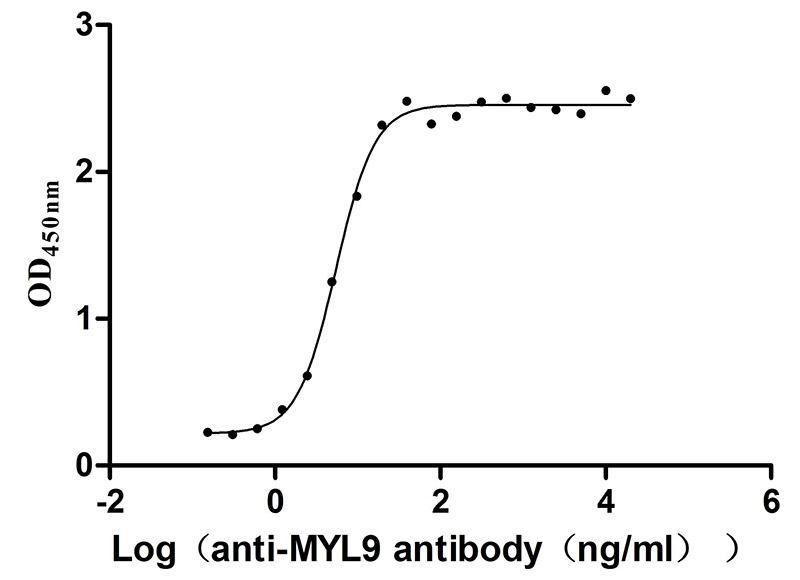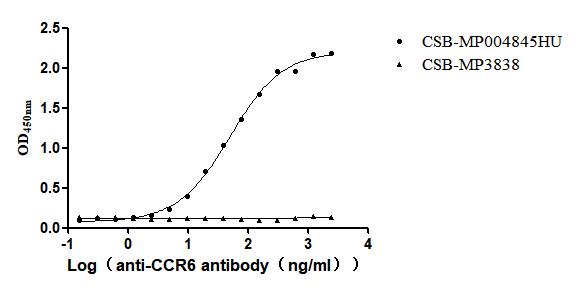Recombinant Mouse Keratin, type I cytoskeletal 17 (Krt17)
-
中文名稱:Recombinant Mouse Keratin, type I cytoskeletal 17 (Krt17)
-
貨號:CSB-EP889547MO
-
規格:¥1836
-
圖片:
-
其他:
產品詳情
-
純度:Greater than 90% as determined by SDS-PAGE.
-
生物活性:Not Test
-
基因名:
-
Uniprot No.:
-
種屬:Mus musculus (Mouse)
-
蛋白長度:Full Length
-
來源:E.coli
-
分子量:55.1 kDa
-
表達區域:1-433aa
-
氨基酸序列MTTTIRQFTSSSSIKGSSGLGGGSSRTSCRLSGSLGAGSCRLGSASGLGSALGSNSYSSCYSFGTGSGYGGNFGGVDGLLAGGEKATMQNLNDRLASYLDKVRALEEANTELEVKIRDWYQKQAPGPARDYSAYYHTIEDLKNKILVATVDNASILLQIDNARLAADDFRTKFETEQALRMSVEADINGLRRVLDELTLARADLEMQIENLKEELAYLKKNHEEEMNALRGQVGGEINVEMDAAPGVDLSRILSEMRDQYEKMAEKNRKDAEDWFFSKTEELNREVATNSELVQSGKSEISELRRTMQALEIELQSQLSMKASLEGSLAETENRYCVQLSQIQGLIGSVEEQLAQLRCEMEQQNQEYKILLDVKTRLEQEIATYRRLLEGEDAHLTQYKPKEPVTTRQVRTIVEEVQDGKVISSREQVHQTTR
Note: The complete sequence may include tag sequence, target protein sequence, linker sequence and extra sequence that is translated with the protein sequence for the purpose(s) of secretion, stability, solubility, etc.
If the exact amino acid sequence of this recombinant protein is critical to your application, please explicitly request the full and complete sequence of this protein before ordering. -
蛋白標簽:C-terminal 6xHis-tagged
-
產品提供形式:Liquid or Lyophilized powder
Note: We will preferentially ship the format that we have in stock, however, if you have any special requirement for the format, please remark your requirement when placing the order, we will prepare according to your demand. -
緩沖液:If the delivery form is liquid, the default storage buffer is Tris/PBS-based buffer, 5%-50% glycerol. If the delivery form is lyophilized powder, the buffer before lyophilization is Tris/PBS-based buffer, 6% Trehalose, pH 8.0.
-
復溶:We recommend that this vial be briefly centrifuged prior to opening to bring the contents to the bottom. Please reconstitute protein in deionized sterile water to a concentration of 0.1-1.0 mg/mL.We recommend to add 5-50% of glycerol (final concentration) and aliquot for long-term storage at -20℃/-80℃. Our default final concentration of glycerol is 50%. Customers could use it as reference.
-
儲存條件:Store at -20°C/-80°C upon receipt, aliquoting is necessary for mutiple use. Avoid repeated freeze-thaw cycles.
-
保質期:The shelf life is related to many factors, storage state, buffer ingredients, storage temperature and the stability of the protein itself.
Generally, the shelf life of liquid form is 6 months at -20°C/-80°C. The shelf life of lyophilized form is 12 months at -20°C/-80°C. -
貨期:Basically, we can dispatch the products out in 3-7 working days after receiving your orders. Delivery time may differ from different purchasing way or location, please kindly consult your local distributors for specific delivery time.
-
注意事項:Repeated freezing and thawing is not recommended. Store working aliquots at 4℃ for up to one week.
-
Datasheet & COA:Please contact us to get it.
相關產品
靶點詳情
-
功能:Type I keratin involved in the formation and maintenance of various skin appendages, specifically in determining shape and orientation of hair. Required for the correct growth of hair follicles, in particular for the persistence of the anagen (growth) state. Modulates the function of TNF-alpha in the specific context of hair cycling. Regulates protein synthesis and epithelial cell growth through binding to the adapter protein SFN and by stimulating Akt/mTOR pathway. Involved in tissue repair. May be a marker of basal cell differentiation in complex epithelia and therefore indicative of a certain type of epithelial 'stem cells'. Acts as a promoter of epithelial proliferation by acting a regulator of immune response in skin: promotes Th1/Th17-dominated immune environment contributing to the development of basaloid skin tumors. May act as an autoantigen in the immunopathogenesis of psoriasis, with certain peptide regions being a major target for autoreactive T-cells and hence causing their proliferation.
-
基因功能參考文獻:
- Narrow-band ultraviolet B irradiation with doses of MED or higher could eliminate the imiquimod-induced psoriasis-like dermatitis and inhibit K17 expression via the ERK1/2 and STAT3 signaling pathways. PMID: 29349514
- TGF-beta1-induced CK17 enhances cancer stem cell-like properties rather than epithelial-mesenchymal transition in promoting cervical cancer metastasis via the ERK1/2-MZF1 signaling pathway. PMID: 28703907
- the data suggest that the loss of Krt17 may foster an overall protective environment for lesion-prone cervical tissue. PMID: 27065324
- High KR17 expression is associated with oral cancer. PMID: 27512993
- p53 operates as a direct Krt17 repressor that invites therapeutic targeting in radiodermatitis . PMID: 26747697
- genetic loss of caspase-7 promotes solar-simulated light-induced skin carcinogenesis by blocking caspase-7-mediated cleavage of keratin-17. PMID: 26271098
- Data indicate that keratin 17 (k17) regulates autoimmune regulator Aire to promote skin tumorigenesis. PMID: 26168014
- These findings functionally integrate K17, hnRNP K, and gene expression along with RSK and CXCR3 signaling in a keratinocyte-autonomous axis and provide a potential basis for their implication in tumorigenesis PMID: 25713416
- KRT17 is necessary for oncogenic transformation in Ewing sarcoma and accounts for much of the GLI1-mediated transformation function but via a mechanism independent of AKT signaling. PMID: 24043308
- Cytochrome b5 and cytokeratin 17 are biomarkers in bronchoalveolar fluid signifying onset of acute lung injury. PMID: 22792238
- IL-22 up-regulates K17 expression in keratinocytes in a dose-dependent manner through STAT3- and ERK1/2-dependent mechanisms. PMID: 22808266
- Type I keratin 17 protein is phosphorylated on serine 44 by p90 ribosomal protein S6 kinase 1 (RSK1) in a growth- and stress-dependent fashion PMID: 22006917
- Keratin 17 promotes epithelial proliferation and tumor growth by polarizing the immune response in skin. PMID: 20871598
- Keratin 17 null mice exhibit age- and strain-dependent alopecia PMID: 12050118
- Induction of K6 and K17 correlates with changes in epithelial cells at wound edge. Closure of embryonic wounds is delayed in K17 null embryos. Correlation between K6 and K17 expression and epithelial wound closure. Important for timeliness of process. PMID: 12557214
- Gene located immediately 5' upstream from mK17 is functional and encodes a type I keratin protein highly analogous to mK17. Expression is highly restricted and most prevalent in nail bed and matrix, mK17n (n stands for nail). (K17n) PMID: 15102087
- K6alpha, K6beta, and K17 have roles in normal development of the nail bed epithelium PMID: 15601842
- sonic hedgehog participates in K17 regulation PMID: 16055733
- These findings identify K17 and TNFalpha as two novel and interdependent regulators of hair cycling. PMID: 16702408
- keratin 17, an intermediate filament protein rapidly induced in wounded stratified epithelia, regulates cell growth through binding to the adaptor protein 14-3-3sigma PMID: 16710422
顯示更多
收起更多
-
亞細胞定位:Cytoplasm.
-
蛋白家族:Intermediate filament family
-
組織特異性:Expressed strongly in outer root sheath and medulla region of hair follicle and in the early differentiating epithelial cells (trichocytes) within the hair bulb region. Weak expression in the matrix cells of hair bulb. Also present in the sweat gland with
-
數據庫鏈接:
Most popular with customers
-
Recombinant Human Tumor necrosis factor receptor superfamily member 18 (TNFRSF18), partial (Active)
Express system: Mammalian cell
Species: Homo sapiens (Human)
-
Recombinant Human Tumor necrosis factor receptor superfamily member 11B (TNFRSF11B) (Active)
Express system: Mammalian cell
Species: Homo sapiens (Human)
-
Recombinant Human Delta-like protein 3 (DLL3), partial (Active)
Express system: Mammalian cell
Species: Homo sapiens (Human)
-
Express system: Mammalian cell
Species: Homo sapiens (Human)
-
Recombinant Mouse GDNF family receptor alpha-like (Gfral), partial (Active)
Express system: Mammalian cell
Species: Mus musculus (Mouse)
-
Express system: Mammalian cell
Species: Homo sapiens (Human)
-
Recombinant Human Myosin regulatory light polypeptide 9 (MYL9) (Active)
Express system: Yeast
Species: Homo sapiens (Human)
-
Recombinant Human C-C chemokine receptor type 6(CCR6)-VLPs (Active)
Express system: Mammalian cell
Species: Homo sapiens (Human)

